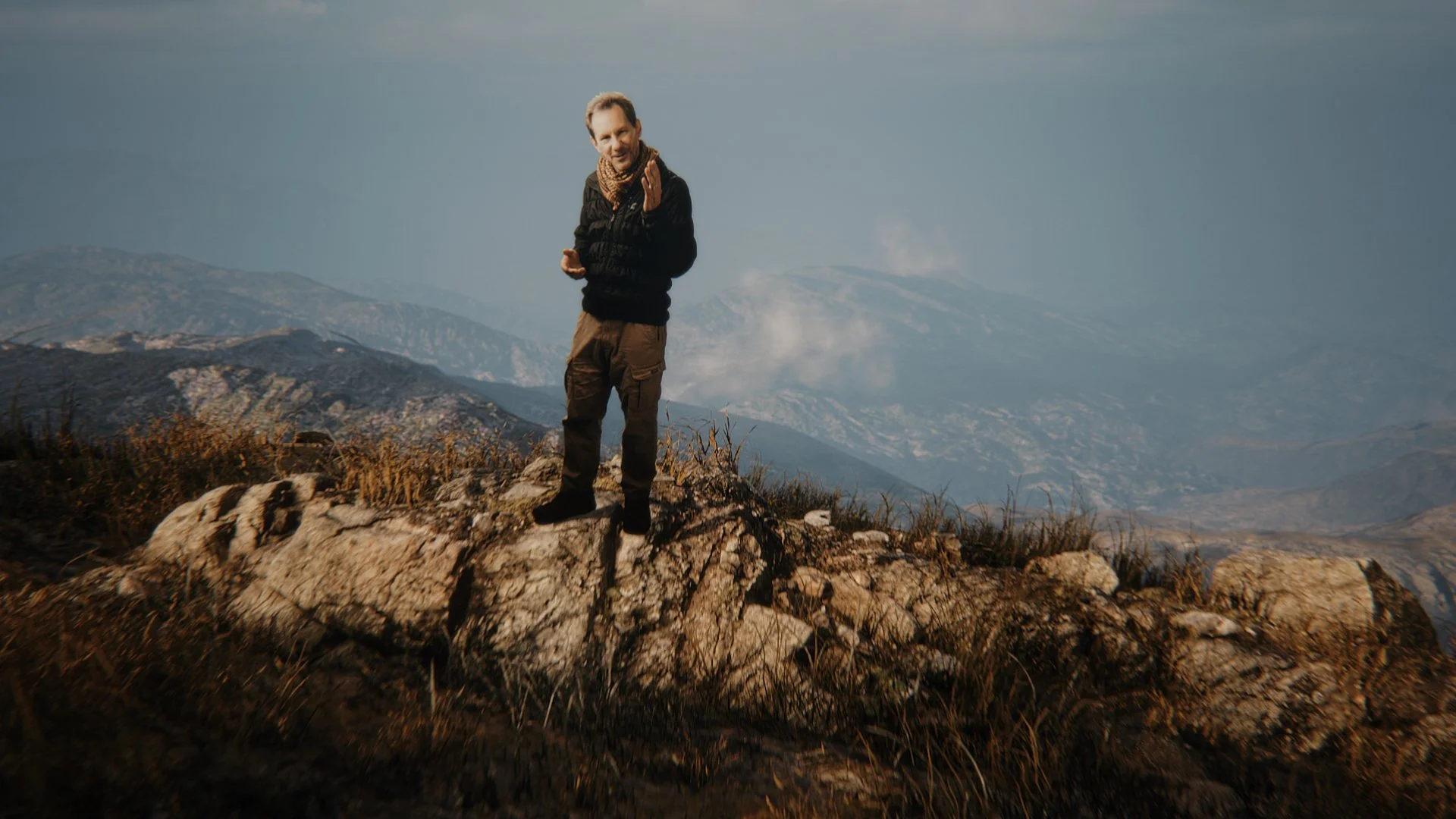Our Approach
We reverse-engineered the ambition behind The Weather Channel’s virtual sets and built a bespoke in-house virtual production pipeline that could deliver the same emotional weight, at a fraction of the cost.
Key innovations included:
• Building a modular, real-time VFX facility powered by game engine technology (e.g. Unreal Engine)
• Developing a green screen workflow for seamless live-action integration
• Designing a library of reusable, photoreal 3D assets to reduce per-project overhead
• Training editorial and motion teams to collaborate across traditional and real-time production pipelines
The result? A streamlined, repeatable system that allowed us to recreate visually stunning sequences, from tsunamis to meteor strikes, with cinematic scale and emotional clarity, without the infrastructure of a full broadcast studio.
The Results
We unlocked a new class of immersive, science-driven storytelling, delivering blockbuster visuals at speed, scale,
and significantly reduced cost.
• Production time cut by 60%, and costs reduced by 50%
• Content optimised for broadcast, social, and digital platforms
• Enabled rapid-turnaround storytelling with big-screen impact
This virtual production model now powers multiple formats across our climate, science, and factual storytelling work, combining the accuracy of journalism with the awe of cinema, ready for the biggest screens and broadest audiences.
CASE STUDY:
IMMERSIVE, GIANT-SCREEN VIRTUAL EXPERIENCES
The Challenge
The Weather Channel had set the benchmark with its groundbreaking mixed reality weather segments: photoreal, immersive, and emotionally powerful. The question they put to us:
Could we match that cinematic impact, using real presenters in virtual environments, but do it faster, smarter, and at scale, without the broadcast-sized budget?
We needed to deliver high-impact science storytelling in virtual spaces, cost-effectively, under tight timelines, and ready for any platform.

